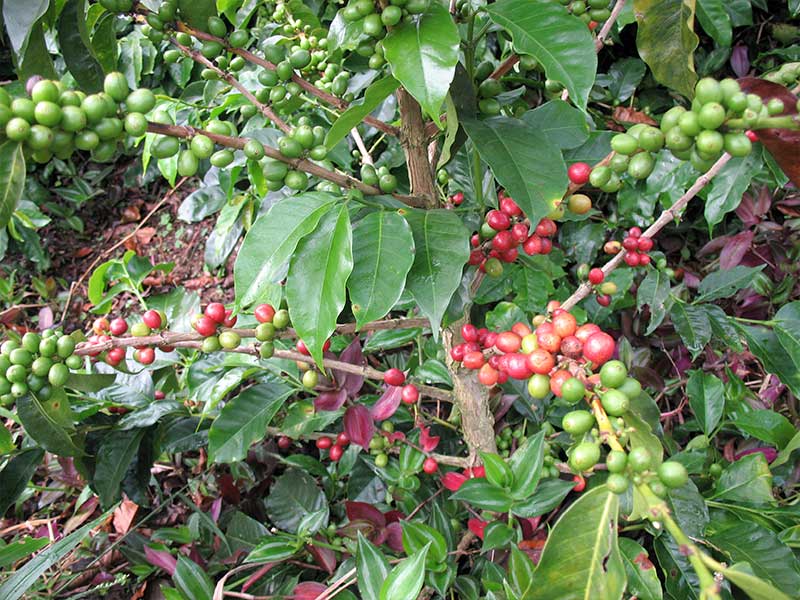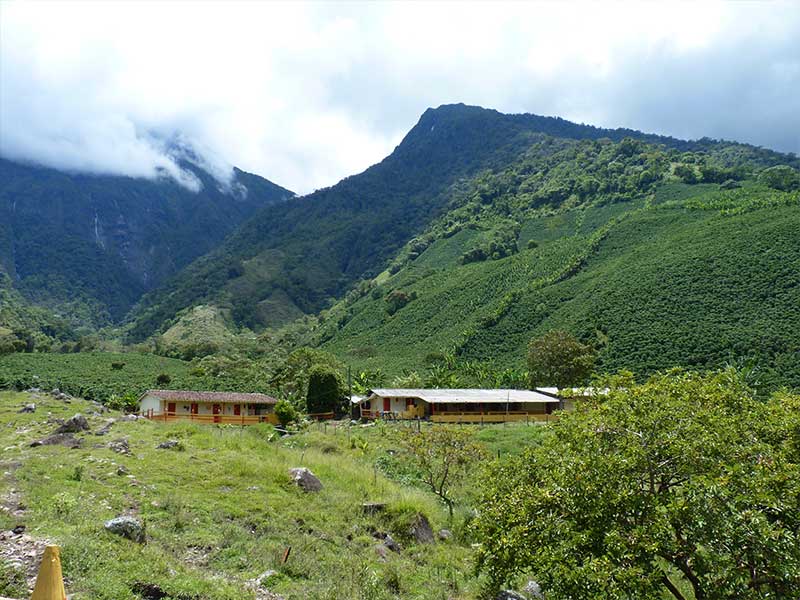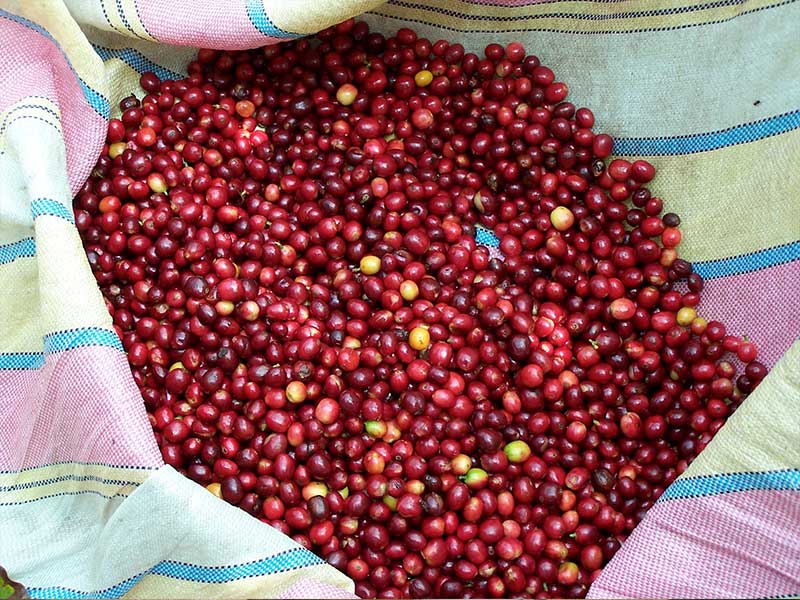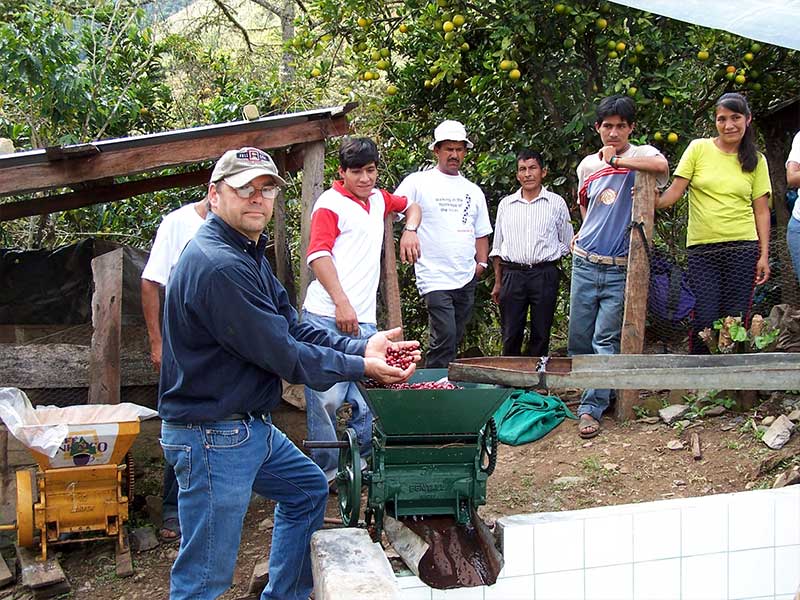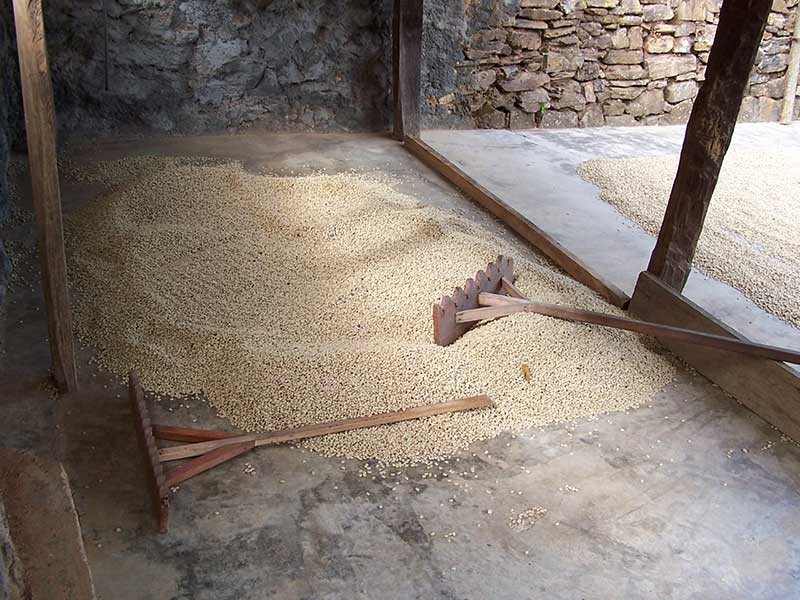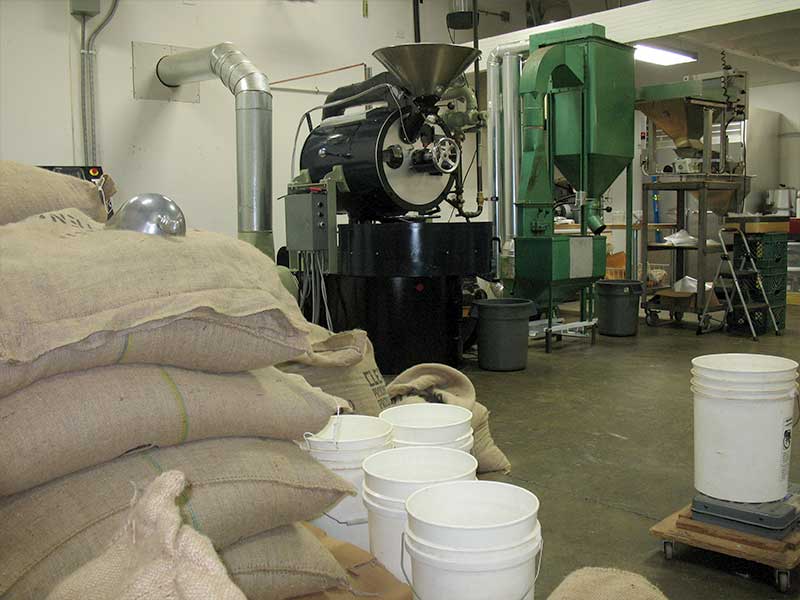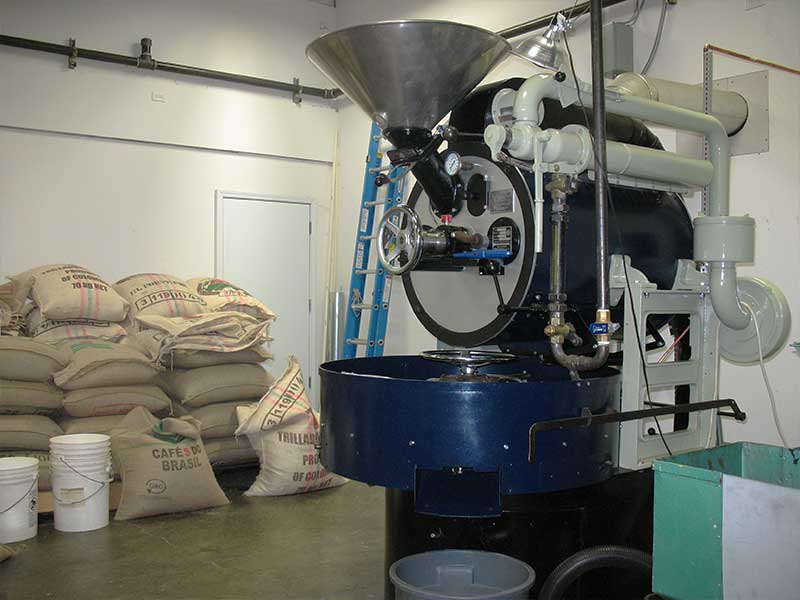Most coffee is still harvested by hand due to land restrictions that make it difficult to mechanize. 100 pounds of harvested cherries will yield 20 pounds of coffee beans once processed. They can be processed using the dry or wet method.
The dry method requires laying the cherries out in the sun and rotating the beans regularly to ensure even drying. This can take weeks to get to the proper water content level before the cherries are then stored in warehouses.
The wet method passes the cherries through a pulping machine where the bean is separated from the skin. They are rinsed in water baths where lighter less ripe beans float to the top and heavier ripe beans sink to the bottom. They are then passed through drums that separate them by size. The beans are then fermented in large tanks to remove a layer called the parenchyma. After this, the beans are ready for drying and storage.
They can be sun dried or machine dried in tumblers. Then they are stored in bags and prepared for export. Before export the beans are hulled, polished, graded and sorted.
About 7 million tons of green coffee is produced worldwide each year. The green coffee is shipped in jute or sisal bags and loaded into shipping containers. Coffee roasting is usually performed in the country it is shipped to, to maintain maximum freshness and quality for coffee drinkers.
The coffee is roasted in machines and the beans are constantly moving to prevent burning. When the beans reach an internal temperature of 400 degrees they start to turn brown. This process is what produces the aroma and flavors of the coffee we drink. Full City Coffee’s founder has been roasting coffee since 1979. Michael rises early each day at 3:30 AM to begin the roasting process, creating finely crafted coffees that are unparalleled in flavor and style. Each batch is carefully selected and roasted for the perfect Full City brew. Roasting is a technical skill that blends science and art to create peak flavor and quality.

